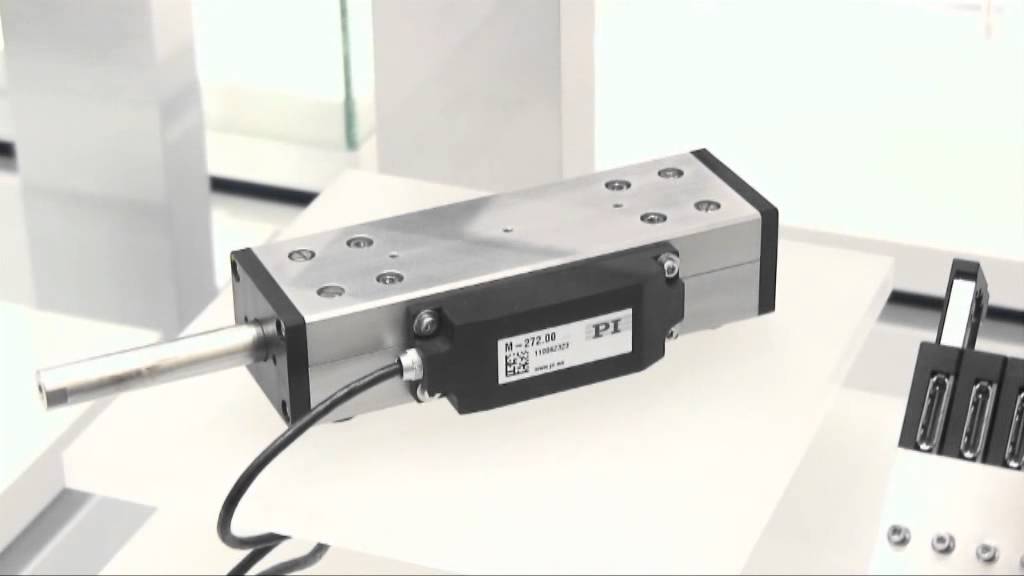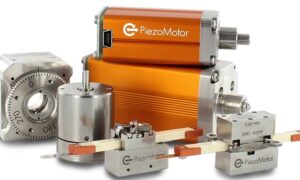When it comes to high-precision motion control, the type of motor you choose plays a pivotal role in determining the accuracy, performance, and efficiency of your system. In industries like medical, semiconductor, and optronic applications, every micron counts. This is where piezoelectric motors shine, providing unmatched precision, reliability, and efficiency. If you’re looking for motors that offer ultra-fine control and performance in demanding environments, then piezoelectric motors might just be what you need. Let’s dive deeper into why these motors are becoming the go-to choice for high-precision motion control.
What Are Piezoelectric Motors?
Piezoelectric motors are a class of actuators that rely on the piezoelectric effect, which occurs when certain materials generate an electric charge in response to mechanical stress. These motors convert electrical energy into mechanical motion, offering highly precise movement with minimal power consumption. Unlike traditional electric motors, which rely on magnetic fields and rotors, piezoelectric motors use the expansion and contraction of piezoelectric materials to generate motion.
These motors are highly valued for their ability to provide extremely fine, controlled movements, making them ideal for applications where precision is critical. The key to their success lies in the ability to achieve nanometer-scale movements, making them indispensable in fields that require such meticulous attention to detail.
Advantages of Piezoelectric Motors for Motion Control
Piezoelectric motors offer a wide range of benefits that set them apart from conventional motor technologies. Here’s a closer look at why they are the preferred choice for high-precision motion control:
1. Unmatched Precision and Accuracy
One of the primary reasons why piezoelectric motors are favored for high-precision applications is their incredible accuracy. Thanks to the piezoelectric effect, these motors can achieve movements in the nanometer range, making them ideal for applications that require the finest degree of motion control. Whether you’re moving small lenses in an optical system or manipulating components in a semiconductor manufacturing process, piezoelectric motors provide unparalleled precision.
2. Silent Operation
Traditional motors often generate noise due to mechanical components like gears and brushes. On the other hand, piezoelectric motors operate with minimal mechanical contact, resulting in quieter operation. This feature makes them particularly attractive for medical and optical applications, where noise can be disruptive or detrimental to sensitive equipment.
3. Compact Design
Piezoelectric motors can be built in incredibly small sizes, offering flexibility in design. This compactness makes them a great fit for applications with limited space. From medical devices to micro-positioning systems, their small form factor allows them to be integrated into places where traditional motors would be too bulky or impractical.
4. High Efficiency and Low Power Consumption
Another significant advantage of piezoelectric motors is their low power consumption. These motors don’t require a lot of energy to generate precise movements, making them energy-efficient and ideal for battery-powered systems. In fields like medical technology, where power availability may be limited, this low power requirement is a significant benefit.
5. No Need for External Sensors
Unlike many other types of motors, piezoelectric motors don’t always require external sensors for position feedback. Thanks to their inherent design, they can maintain precise control over movement, often with just the driving signal and without the need for additional measurement devices. This results in simpler and more cost-effective systems, especially in applications where high-end sensors would be otherwise necessary.
Applications of Piezoelectric Motors
The unique capabilities of piezoelectric motors make them highly versatile, finding use in several high-precision motion control applications across various industries:
1. Medical Applications
In the medical field, precision is of the utmost importance, and piezoelectric motors are commonly used in devices that require micro-positioning. These motors can be found in surgical robots, endoscopes, and advanced diagnostic equipment, where their ability to provide accurate, fine motion with minimal energy consumption is invaluable.
For example, in endoscopy, where small, flexible tools must be positioned precisely within the body, piezoelectric motors offer the required level of control without generating excess heat or noise, ensuring that delicate procedures can be performed with high reliability.
2. Semiconductor Manufacturing
In semiconductor manufacturing, the need for high-precision positioning is critical. Piezoelectric motors are used in photolithography, wafer handling, and alignment tasks. Their ability to achieve precise movements at the nanometer level makes them indispensable in a field where even the smallest error can lead to catastrophic consequences. The motors’ ability to provide fast, accurate movements within a confined space makes them ideal for this industry.
3. Optronic Applications
Piezoelectric motors are also utilized in the optronic industry, particularly in optical systems and instruments. Lenses, mirrors, and other optical components need to be positioned with great precision for optimal performance. Whether it’s for microscopes, telescopes, or high-precision cameras, piezoelectric motors can drive these optical components with accuracy and stability, contributing to sharper images and more efficient systems.
Nanomotion Technology: Pushing the Boundaries of Piezoelectric Motion Control
One of the most notable companies pioneering in the piezoelectric motion control field is Nanomotion. Their patented Ultrasonic Standing Wave motors are a breakthrough in piezoelectric motors, offering unlimited linear and rotary motion. This technology is highly adaptable, offering silent motion control while maintaining exceptional precision and performance.
Nanomotion’s motors are capable of functioning in challenging environments, making them perfect for use in medical, semiconductor, and optronic applications. The company’s range of motors is versatile, with different sizes and configurations designed for a variety of systems. These motors can operate within closed-loop servo systems, driving motion control systems and offering small, low-power motors that are optimized for use in optronic applications.
Thanks to their groundbreaking technologies, Nanomotion has become a leader in the piezoelectric motor field, providing solutions that support motion requirements in critical sectors.
How Piezoelectric Motors Compare to Other Motion Technologies
When comparing piezoelectric motors to other motion control technologies like DC motors, stepper motors, or hydraulic actuators, the difference in precision and performance becomes clear. While traditional motors can provide large-scale motion, they often lack the fine control needed in high-precision applications. Additionally, motors like stepper motors can suffer from issues like resonance or overheating, which piezoelectric motors avoid.
Piezoelectric motors are also highly responsive, with fast startup and shutdown times. They can achieve high-frequency motion control without significant wear and tear, unlike motors with brushes or gears. These qualities make them ideal for high-precision applications where rapid and accurate positioning is essential.
The Role of Motion Systems in Precision Control
When it comes to integrating piezoelectric motors into complex systems, motion systems are an integral part of the equation. These systems include a combination of controllers, drivers, and feedback mechanisms that work together to ensure precise motion. Piezoelectric motors often function as the core actuator within these systems, but their true potential is unlocked when combined with advanced motion control technology.
Motion systems ensure that the piezoelectric motors are operating at their optimal performance, providing smooth and precise movements. Whether it’s through real-time feedback or advanced algorithms that adjust the motor’s behavior, motion systems ensure that piezoelectric motors can operate with the utmost precision.
Conclusion: A Future Fueled by Piezoelectric Motors
As industries continue to demand higher precision and more efficient systems, piezoelectric motors will play a crucial role in meeting those needs. Their unique characteristics—silent operation, high precision, low power consumption, and compact design—make them ideal for high-precision motion control across a wide range of industries.
If you’re looking for a motor that offers exceptional accuracy and performance in challenging environments, piezoelectric motors are an excellent choice. Whether in the medical field, semiconductor industry, or optronic applications, these motors provide the level of control and precision that’s critical to ensuring success. And with the continued advancements in motion systems, the future of piezoelectric motors looks brighter than ever.































